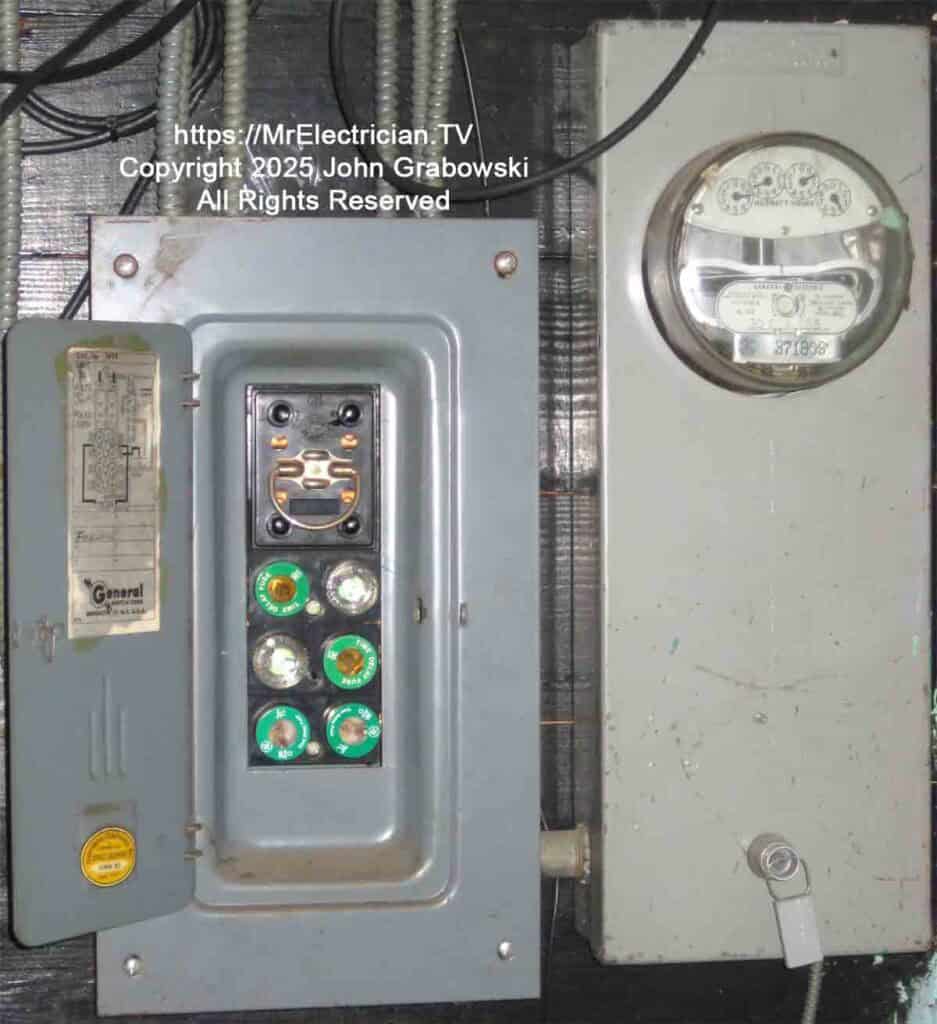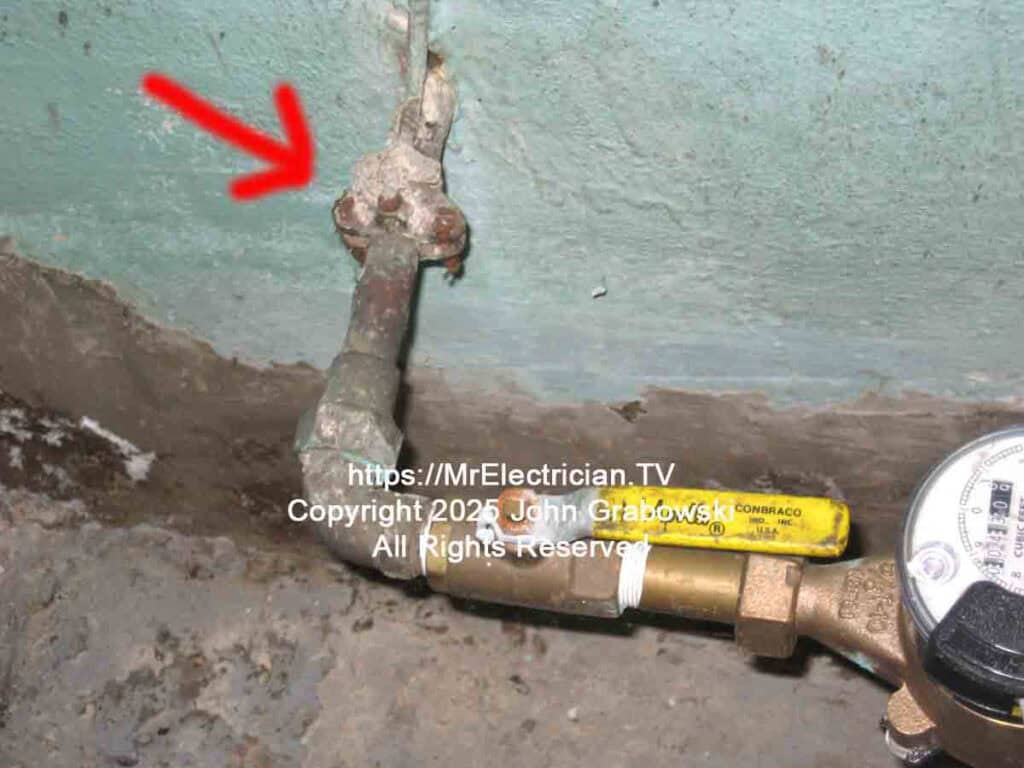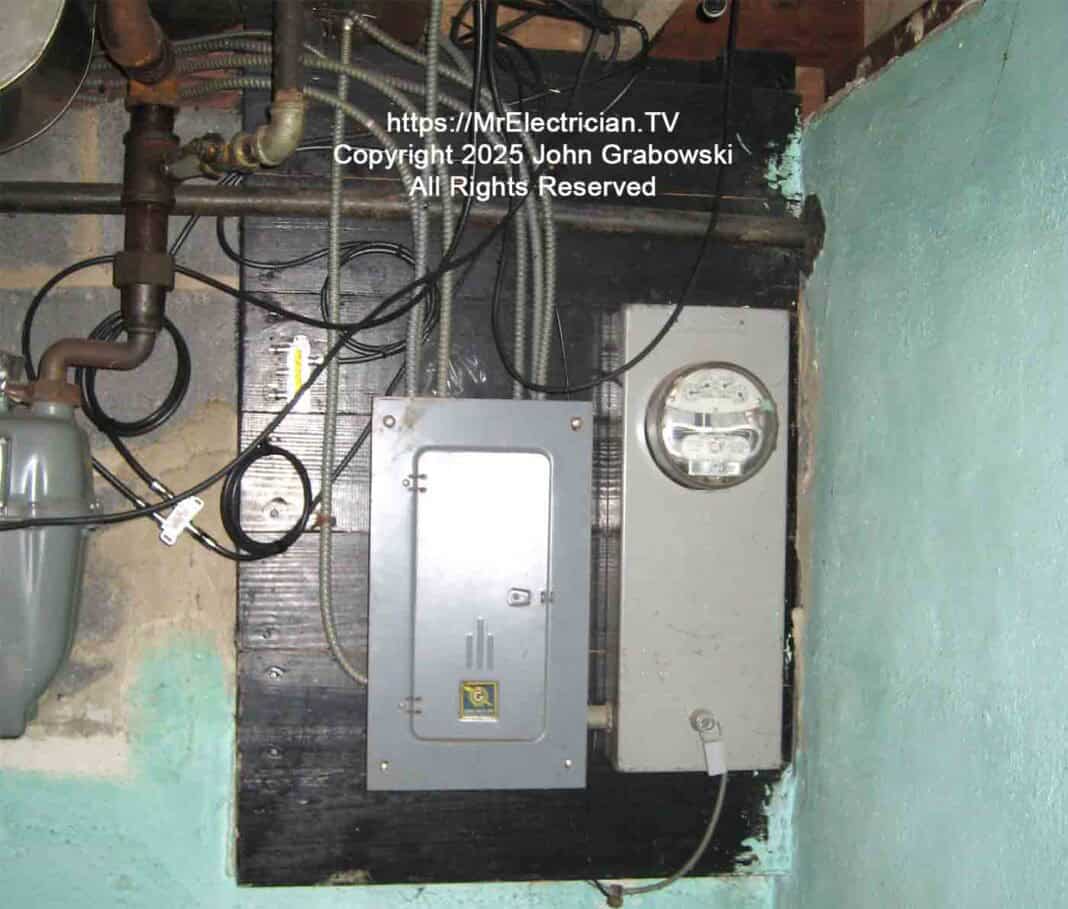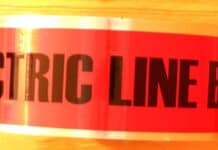Dear Mr. Electrician: Why do I have a basement electric meter?
NOTE: Some text links below go to applicable products on Amazon. As an Amazon Associate, I earn from qualifying purchases. Using my links helps to keep this website FREE.
Answer: There are a few reasons why electric meters were located inside of basements.
When the latest technology known as electricity was being included in new home construction, the electrical apparatus and wiring supply industries were still in their infancy. There was not a lot of choices of sophisticated electrical equipment for power distribution and measurement. Consequently, most things were not initially built to withstand weather. Having a basement electric meter protected it from the elements.
Another consideration was the aesthetic look of the exterior of the house. Architecture was much more ornate and artistic over 100 years ago. Putting utility meters on the exterior would have taken away from the visual appeal.
Safety and protection of equipment was also a driving factor in putting utilities in the basement. In urban areas all utilities might be be delivered underground. Having basement electric meters keeps them safe from abuse and accidents.
In many cases it was just easier to install a pipe directly into a basement electric meter rather than run pipe up the side of a house and then back down again into the basement. Service entrance cable was not available yet.
The basement would have to be accessible for a utility worker to come in and read the electric meter. In addition to the basement electric meter, the gas meter was usually in the basement as well. Before gas there were coal deliveries that needed access to the basement.
To accommodate utility workers, the construction of some houses included an exterior door from the basement that was left unlocked. A separate door at the top of the interior basement stairs had a lock on it so utility workers could not have access to the living space.
I had often seen for myself a house style where there is a side entrance to the house from the driveway. You entered onto a stair landing. You could go down to the basement or up to the kitchen. The kitchen door had a lock on it, but the basement had nothing.

The photo above depicts the basement electric meter socket against the foundation wall with the main fuse panel adjacent. The armored grounding electrode conductor exits the bottom of the meter socket and goes to the water main pipe before the water meter. See photo below.

The corroded water pipe ground clamp above needs to be replaced. This is important for lightning protection and voltage stabilization.
The armored grounding electrode conductor is a number 8 solid copper wire in a steel armored jacket. Normally a number 6 wire would be required, but the metal armor counts as part of the grounding conductor as long as the proper ground clamp is used. It has an extra strap to clamp the metal armor.
The ground clamp connection is important not only for a basement electric meter, but for all electric meters and electrical equipment and appliances because it helps to protect your home from lightning strikes.
If your electric bill went up suddenly, read my article about what may have caused it.
You can visit all of my Grounding and Bonding articles by clicking here.
If you have two prong receptacle outlets, you should read my article about updating them.
To help keep this website FREE, please use this Amazon link for all of your purchases.
Click for a FREE copy of my book “Almost Everything You Need To Know To Repair a Bathroom Exhaust Fan In Your Home.”
Get your required “Emergency Disconnect, Service Disconnect” labels and stickers to satisfy the 2023 National Electrical Code requirements in article 230.85(E)(1) and (2) by going to my Zazzle Shop here.
Visit my Link Tree for social, stickers, and merchandise links.






